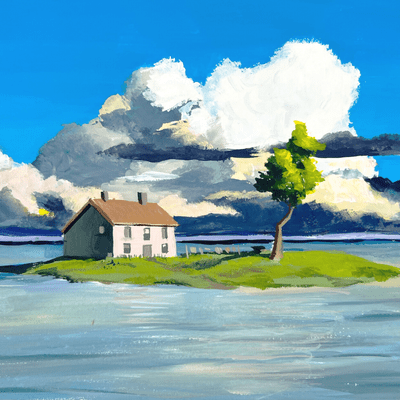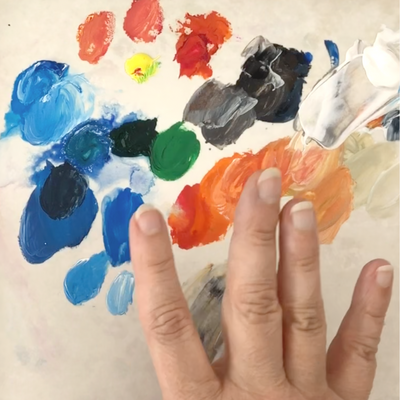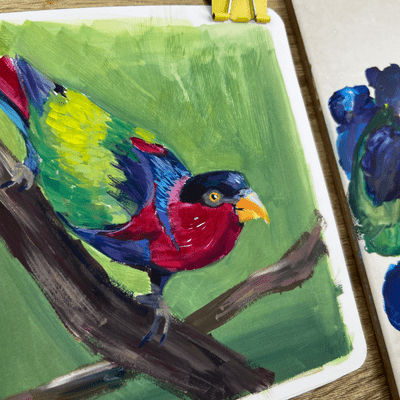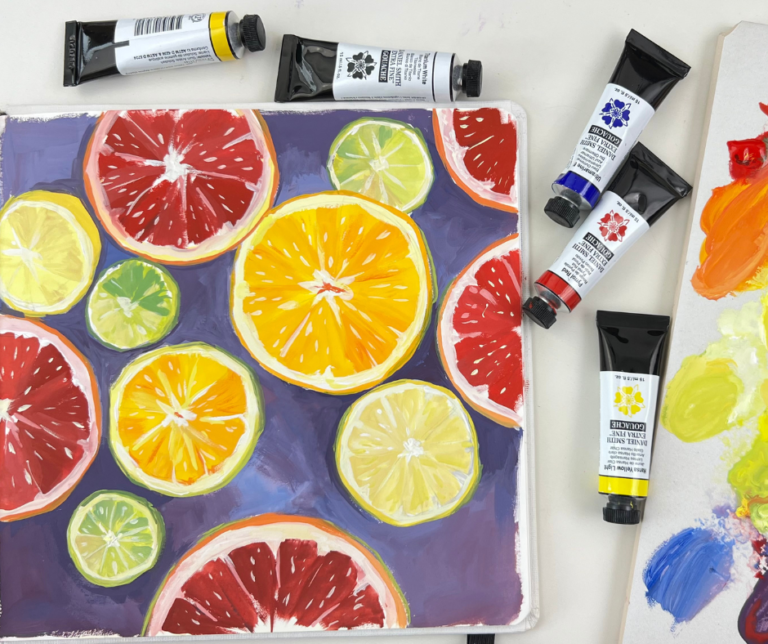What brushes to use for gouache?
Many people initially feel intimidated by gouache, and they aren’t sure which brushes to use or the best technique for using them. Here’s a list of my favorite brushes for working with gouache.
You will need only three different brushes to paint with gouache.
Table of Contents
- Different types of brushes for gouache painting.
- Different sizes of brushes.
- Flat brushes.
- Angled brushes.
- Round brushes.
- Liners or riggers.
- Conclusion
Different types of brushes for gouache painting.
You can get natural or synthetic brushes, and natural brushes are made from animal hair, while synthetic brushes are made from manufactured materials. Natural brushes are softer but don’t last as long as synthetics.
Synthetic brushes have different stiffness, from soft to rigid. When buying them, bend the hair on your hand to feel the response of the bristles. It depends on your painting style and your preferences.
Regarding gouache, I prefer synthetic brushes that I’m not afraid to use and will last longer. Plus, I like avoiding animal hair for ethical reasons, not to mention they are more pricey.
You can watch this video to find my favorite brushes in action:
Different sizes of brushes.
Paintbrushes come in different sizes and shapes. The most important thing is to choose the right one for your painting. The brush size can vary from a few millimeters to 20 centimeters (10 cm is about 4 inches). You can use large brushes for backgrounds or landscapes and small ones for details like leaves or grass.
I usually begin with large brushes to avoid getting caught in details. Then I’ll go for smaller brushes to achieve more details.
Flat brushes.
The flat brush is your best bet for applying thin, even layers of paint. It’s also suitable for blending colors and creating a smooth, seamless transition between colors. Flat brushes are also great for covering large areas with flat color and creating straight lines and edges.
Flat brushes come in different widths; having a small and a large one may be suitable.
You can use it on the large side for flat, even brushstrokes, or on edge for thin lines. If you vary the pressure, you’ll get different widths.

Angled brushes.
You can use angled brushes to make unexpected shapes by applying the fine tip to the paper. You can make leave shapes by varying the pressure on the brush. And you can also use the angled brush as a flat brush.
This brush can be challenging to master when you are used to flat brushes. Practice before using it on a finished painting.
Round brushes.
Use a round brush to paint fine lines and delicate details. Round brushes are also good for painting dots or leaves. You can also cover large areas with a large brush. You can use watercolor brushes if you have some, but if you plan to buy brushes for gouache painting, look for ‘acrylic’ brushes in your favorite art store. Watercolor brushes have a large belly holding a lot of water. For gouache, the water will be replaced by paint, and you may lose a lot of it!

Liners or riggers.
Liners can create very thin lines and add a lot of detail to your painting. They are best used with a more diluted gouache to ease the paint flow. Liners have long and thin hair; they don’t handle a lot of liquid, so you’ll have to reload them quite often.

Conclusion
I hope this post helped you learn more about gouache and its use. Remember, while there are some essential brushes to use for gouache, the best brush is the one that works best for you! The most important thing is to have fun and enjoy your painting. You can learn everything about gouache supplies here.









